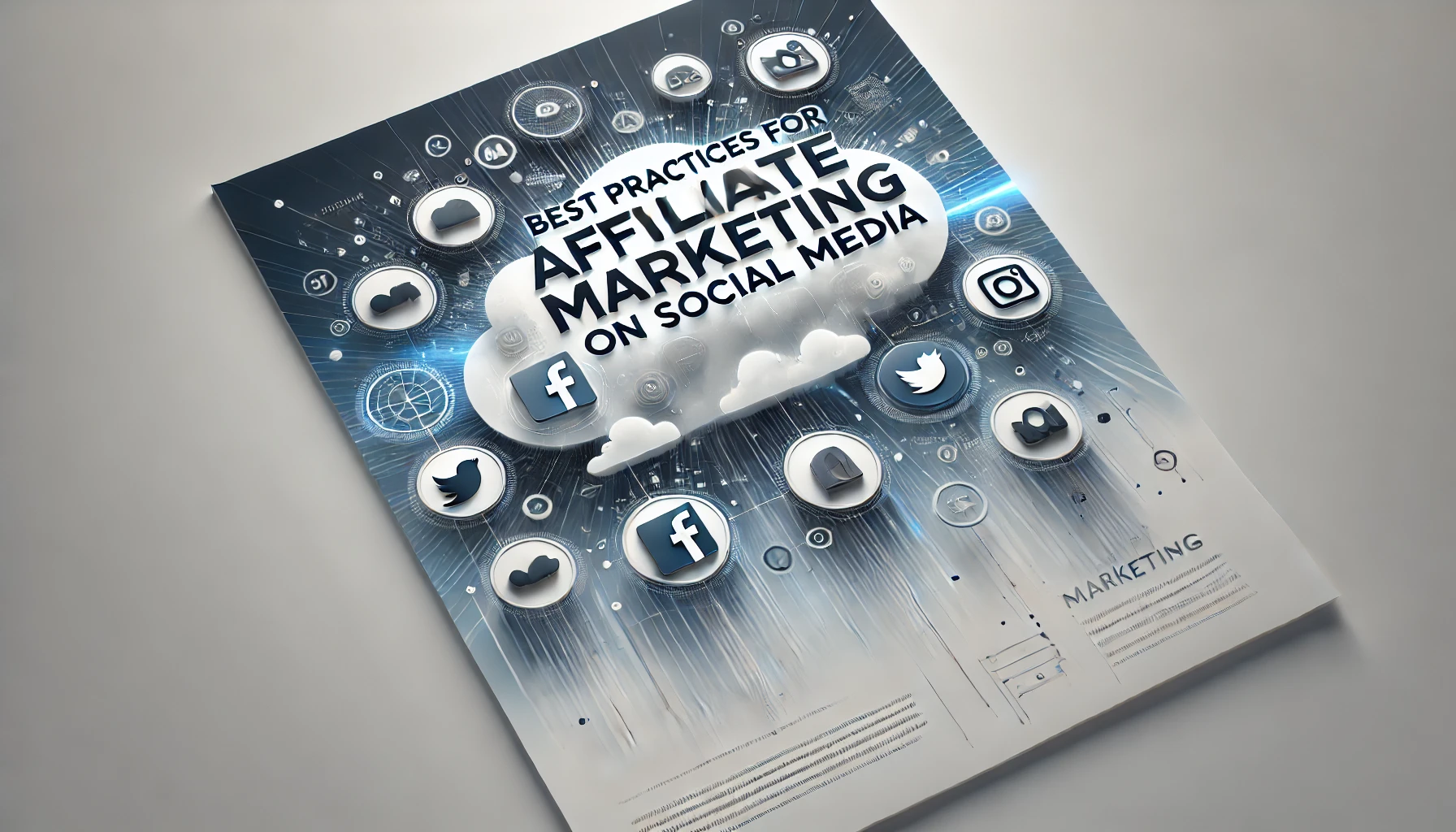Best Practices for Affiliate Marketing on Social Media start with understanding the unique opportunities these platforms offer for marketing. Think of platforms like Facebook, Instagram, and TikTok as bustling marketplaces where brands and consumers meet. It’s where buying decisions often happen on the fly, making them perfect spots for affiliate marketers.
Social media has changed how affiliate marketing plays out. Not just static ads anymore, it’s about dynamic, engaging content that hook people in then and there. And with mobile access on the rise, the power of social media to connect with potential customers has become even stronger.
Nowadays, everyone wants authenticity and relatability. People connect more with real stories and real experiences rather than just hard sell tactics. This has reshaped affiliate marketing strategies to be more personal, shared through individuals rather than coming directly from brands.
The shift isn’t just about connecting with audiences, it’s also about being smart with your approach. You’ve got to know what each social media platform offers, and how its audience clicks. The key is to be authentic and build trust – that’s when the magic happens with affiliate marketing.
As we move into the deeper elements of social media for affiliate marketing, keep in mind that this isn’t just a trend, it’s a central piece to marketing strategies. Let’s unpack everything there is to know about maximizing your affiliate marketing game in this ever-changing digital landscape.
Understanding Affiliate Marketing and Its Relevance
Affiliate marketing isn’t just a buzzword; it’s a legit powerhouse in today’s digital economy. Basically, it’s a performance-based marketing tactic where businesses reward affiliates (think bloggers, influencers) for driving sales or traffic their way through the affiliate’s marketing efforts.
One of the coolest things about affiliate marketing? It’s kind of like having a sales army working around the clock to pitch your products or services. Brands pay commissions only for actual, measurable results, making it real efficient. For influencers, it’s a chance to turn their followers into an income source without needing to create their own products.
Affiliate marketing sets the stage for everyone to win. Brands get the promotion and the sales boost, affiliates get their cut, and audiences discover products they’re genuinely interested in. It’s like having a matchmaker bringing interesting content and products to the right people.
For those just getting started, it’s key to have a clear sense of what you’re promoting. Authenticity is huge here. When you love the stuff you’re sharing, people can tell. You wanna be able to stand behind what you promote. Your enthusiasm and belief in a product are contagious and can significantly impact your success in affiliate marketing.
Remember, it’s not just about shoving links at your audience. Provide thoughtful recommendations and share genuine testimonials. Make your audience feel they’re part of an exclusive club where good finds and deals are shared. This openness fosters community and trust, which makes them more likely to act on your affiliate links.
Affiliate marketing is a flexible, evolving strategy. As the digital landscape shifts, staying updated on trends and best practices will keep you ahead. It’s about listening to your audience, knowing what they want, and delivering it authentically through the platforms that fit best.
Choosing Your Platform: Determining the Best Social Media for Affiliate Marketing
Deciding which social media platform to use for affiliate marketing can feel like picking the right outfit for an occasion. Each platform has its own vibes, strengths, and audience, so choosing wisely matters.
Instagram is the runway for showcasing those visually appealing products. Its focus on images and short videos makes it perfect for anything that looks stunning on-screen. Plus, with features like Instagram Stories and IGTV, there are so many ways to creatively present affiliate products.
Then there’s YouTube, the home of long-form content where you can deep dive into product reviews, tutorials, and storytelling. Videos let you show every angle and use case of a product, making it highly persuasive.
Don’t overlook Facebook either. It thrives with its community groups and older demographic. Facebook lets you build communities around your content, creating spaces where more detailed discussions and engagements about products can happen.
And TikTok, the fast and furious newcomer, captures younger audiences with short, snappy, and fun content. Here, creativity rules. Quick-hit content that’s genuine can push affiliate products surprisingly far.
Knowing the demographics you’re targeting is key. Younger crowds might be vibing with TikTok and Instagram, while an older audience is probably more active on Facebook and YouTube. Match this with the kind of content your target crowd wants, and you’re onto something strong.
Understanding what each platform uniquely offers in terms of content style and audience engagement means you can tailor your approach in a way that naturally fits the rhythms of each social media space. Testing different platforms could reveal unexpected successes, so stay open and flexible.
Crafting the Perfect Strategy for Affiliate Marketing Success
Building a solid affiliate marketing strategy is like putting together a puzzle — every piece has its place, but it takes some finessing to get the full picture just right. Starting out, it’s crucial to know what you aim to achieve; setting clear goals keeps you focused and on track.
Content creation is the backbone of affiliate marketing. It’s not enough to just slap a link in a post. Your content should serve a purpose, whether it’s solving a problem, educating, or simply entertaining your audience. Engaging content draws people in and increases the likelihood they’ll click through your affiliate links.
Then there’s audience engagement, the interactive piece of the puzzle. Building a community where your followers feel connected and valued encourages them to trust your recommendations. Engaging through comments, direct messages, or even live sessions can boost that trust factor.
Another vital aspect is authenticity. People are savvy, and they can spot a forced promotion from miles away. Promoting products you genuinely use or believe in is not only ethical, it’s also more likely to resonate with your audience. People value honesty; it translates into loyalty and long-term relationships.
When planning your strategy, mix your promotional content with valuable, non-salesy posts. Talk about your personal experiences, give tips, or share stories that tie naturally into the products or services you’re promoting. This balanced approach keeps your content fresh and engaging.
Analytics come in handy here too. Pay attention to what content works and what doesn’t. Which posts get the clicks or the comments? Adjust your strategy based on these insights, continually refining your approach to meet the expectations and interests of your audience.
Crafting an affiliate marketing strategy is about aligning your goals with audience interests while maintaining genuine, relatable content. A successful strategy is flexible, ready to adapt to new trends and feedback, helping you stay connected with your audience over time.
How to Use Social Media for Maximum Affiliate Marketing Impact
So, you’re ready to make social media work for your affiliate marketing efforts. It all starts with understanding each platform’s unique features and how they can maximize your reach and engagement.
Consistency is key. Regular posting keeps your audience engaged and interested. You don’t have to post every day, but finding a rhythm and sticking to it can help maintain your presence and keep the audience coming back.
Leverage what’s available. Social media platforms are packed with tools designed to boost your content’s visibility. Things like hashtags can expand your reach beyond just your followers. Use them wisely to join conversations that resonate with your content.
Don’t underestimate the power of stories. Whether it’s Instagram Stories, Facebook Stories, or similar features elsewhere, these offer a casual, behind-the-scenes look at your life and your products. They’re great for engaging loyal followers on a personal level.
Interactive elements like polls, Q&As, and stickers can make your audience feel involved, sparking conversations and strengthening relationships. It’s all about creating a community feel where people are compelled to interact and share.
Collaborating with other creators can work wonders too. Team up with influencers in your niche to tap into their audiences, a move that can be mutually beneficial in boosting visibility and credibility.
Analytics aren’t just numbers; they’re insights into the minds of your audience. Use them to learn which types of posts resonate the most. This guides you in tailoring your future efforts for optimal results. It’s about evolving in response to your audience’s needs and behaviors.
Each social media platform is like your own little test lab. Experiment and try new things, because the digital landscape is continuously changing, and staying agile is the key to sustained affiliate marketing success.
Overcoming the Biggest Challenges in Affiliate Marketing
Affiliate marketing isn’t all smooth sailing; there are bumps in the road that every marketer faces sooner or later. The most glaring challenge? The sheer saturation of the market. With so many people doing affiliate marketing, standing out becomes an art and a science. It’s not enough to be another face in the crowd.
Finding your unique voice or angle is key. Think about what makes you, or the product you’re promoting, different. Whether it’s your storytelling style, your expertise, or the unique benefits of the product, hone in on these aspects. This distinctive edge sets you apart in an ocean of affiliates.
Building trust is the backbone of overcoming challenges in this field. In a world where everyone’s trying to sell something, being genuinely authentic is a breath of fresh air for audiences. It’s crucial to let readers or viewers know when content is sponsored and establish clear and honest communication.
Another hurdle is managing the ever-changing digital landscape. Algorithms that once pushed your content might change, and what used to work might not anymore. Staying informed about these changes and being nimble in adapting your strategies is essential.
Consumer skepticism is another reality; many have become desensitized to generic, in-your-face promotions. Overcoming this means weaving storytelling and genuine user experiences into marketing. Demonstrating a product’s real-world value through personal insights or reviews can make it feel relatable rather than just another ad.
Handling competition isn’t just outside but also internally as markets evolve. Sparking creativity and innovating with your content and approach can help you stay a step ahead. Be open to experimenting with new formats, trends, and tactics that resonate with today’s social media users.
Lastly, using analytics to armor yourself with information about what works and what doesn’t offers a clearer route forward, helping you sidestep some common pitfalls. Armed with this knowledge, you can refine your strategies and continue to build genuine engagements even in a crowded field.

Conclusion: Converting Social Media Users into Affiliate Marketing Advocates
Affiliate marketing on social media isn’t just about getting clicks; it’s about developing relationships and turning casual followers into loyal advocates of your brand. At the end of the day, it’s these relationships that move the needle and transform affiliate marketing efforts into long-term success.
By creating a mix of engaging content, you create a dynamic space that not only promotes products but also provides value to your audience. It’s about nurturing a community where people feel both understood and inspired, leading them to trust and value your recommendations.
The true win in affiliate marketing comes when users see you not just as a promoter, but as a trusted advisor. Focusing on transparency, genuine engagement, and high-quality content helps in achieving this. When your audience believes in you, they become active participants in your journey, sharing their own experiences and insights.
To navigate the ever-evolving social media landscape, continuous learning and adaptation are your best friends. Keep up with trends, shift when necessary, and always listen to what your audience needs and wants. It’s a process of growth for both you and your community.
Sustaining and expanding these relationships requires effort and enthusiasm. Regularly interacting with your audience, updating your strategies, and staying authentic solidifies the bridge between you and them, turning social media users into true brand advocates.
Enjoyed this article? Let’s continue the conversation on LinkedIn.

